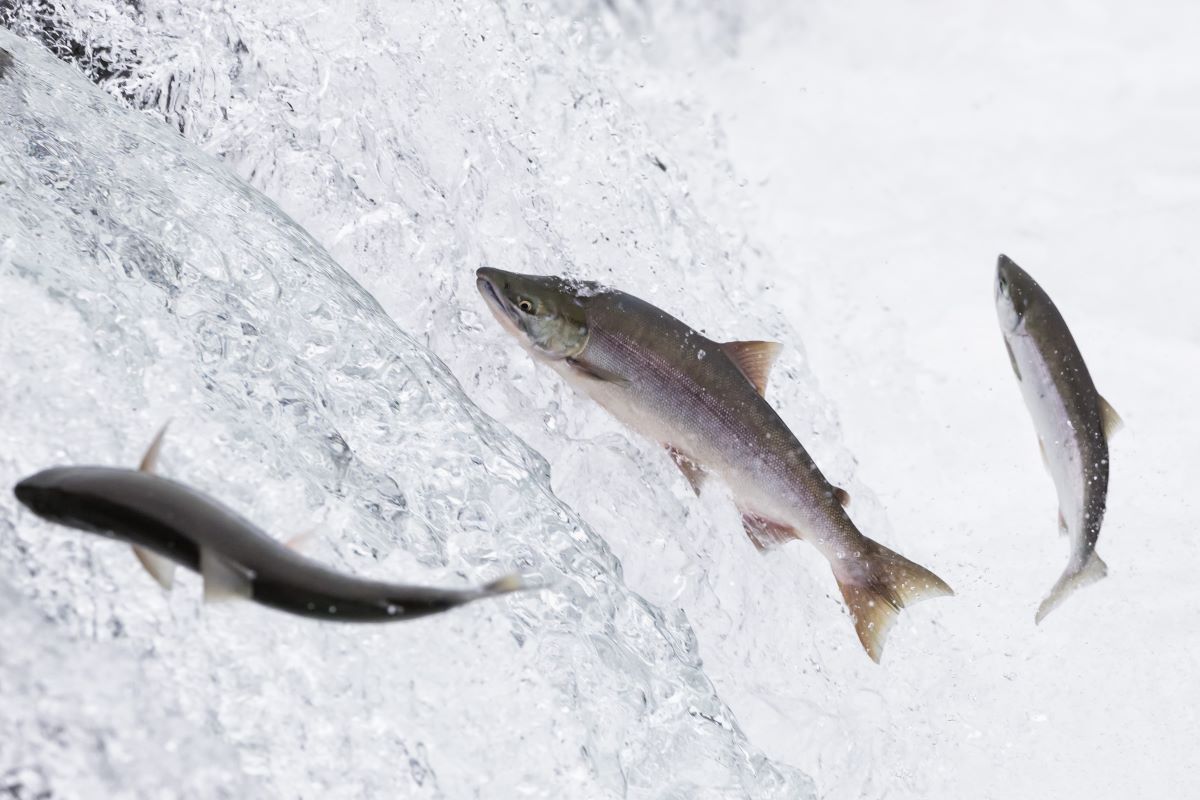
Salmon lovers worldwide are offered a sometimes confounding number of choices. Not only are there many varieties of salmon, but some salmon are wild-caught and others come from salmon farms.
So what is the difference between farm-raised salmon and Copper River wild salmon? Let’s take a look at these very different methods of bringing salmon from the water to your table.
Copper River Wild Salmon
Copper River wild salmon is exactly that—wild. It hatches in cold, clear, freshwater rivers and travels to the ocean to grow. When it is time to spawn, these magnificent fish battle back up the river to the waters where they were born to lay eggs for a new generation.
They thrive on diets of insects, amphibians, and smaller fish.
There are three species of Copper River wild salmon. King (Chinook), Coho, and Sockeye run on this famous Alaskan river during the first salmon run each season. These Copper River species are among the most sought-after in the world for their rich flavors and deep red color.
Atlantic Salmon, once abundant, was overfished and is now an endangered species in the wild. Any Atlantic salmon you find on your plate comes from a salmon farm.
Catching Wild Salmon on the Copper River
Before any salmon are harvested in Alaskan waters, teams of marine biologists determine how many fish can be safely removed during a particular season. Regulations are put in place to ensure that the industry remains sustainable. These rivers supply fish for native populations and discerning diners worldwide.
Copper River wild salmon is caught using traditional methods. Alaska residents are allowed to use dip nets to catch up to 25 salmon per day (only one King per day). Visiting anglers rely on rod and reel or fly fishing to catch these prize fish.
The fish are flash-frozen on site so this culinary superstar is available year-round.
Order Wild Copper River Salmon HERE
Farmed Salmon
The only way to legally obtain Atlantic Salmon is from a salmon farm. Fish farms are known as aquaculture (the same term covers the farming of shellfish and mollusks). Like their agricultural cousins, these farms are largely industrial facilities designed to produce as many fish as possible.
Farmed salmon are spawned and raised in man-made freshwater facilities. After about a year, they are big enough to be moved to large ocean nets. Here they grow for an additional two years before harvesting.
Farmed salmon are fed pellets made of fish meal, vegetables, and animal byproducts.
Done responsibly, fish farming is an extremely efficient, sustainable way of producing healthy, high-protein food for a hungry world. The industry is regulated, but there are still farms that keep too many fish in too small a space, leading to infection and disease. Just like traditional livestock, this means the addition of antibiotics that eventually end up on your plate.
The fish also pale (literally) in comparison to their wild siblings.
Farmed salmon is not as lean as Copper River wild salmon, nor is it the vibrant pink we associate with these amazing fish. In fact, without supplements added to the fish pellets, the flesh of farmed salmon is a milky grey color. The flavor palette is also less varied and interesting.
Salmon connoisseurs will rarely if ever be satisfied with farmed fish. It lacks the nuanced flavor and texture of wild salmon.
Copper River Salmon is recognized as the best in the world. It is sustainably harvested and featured in fine-dining restaurants across the globe.